Last Updated on 20 August 2024 by Cycloscope
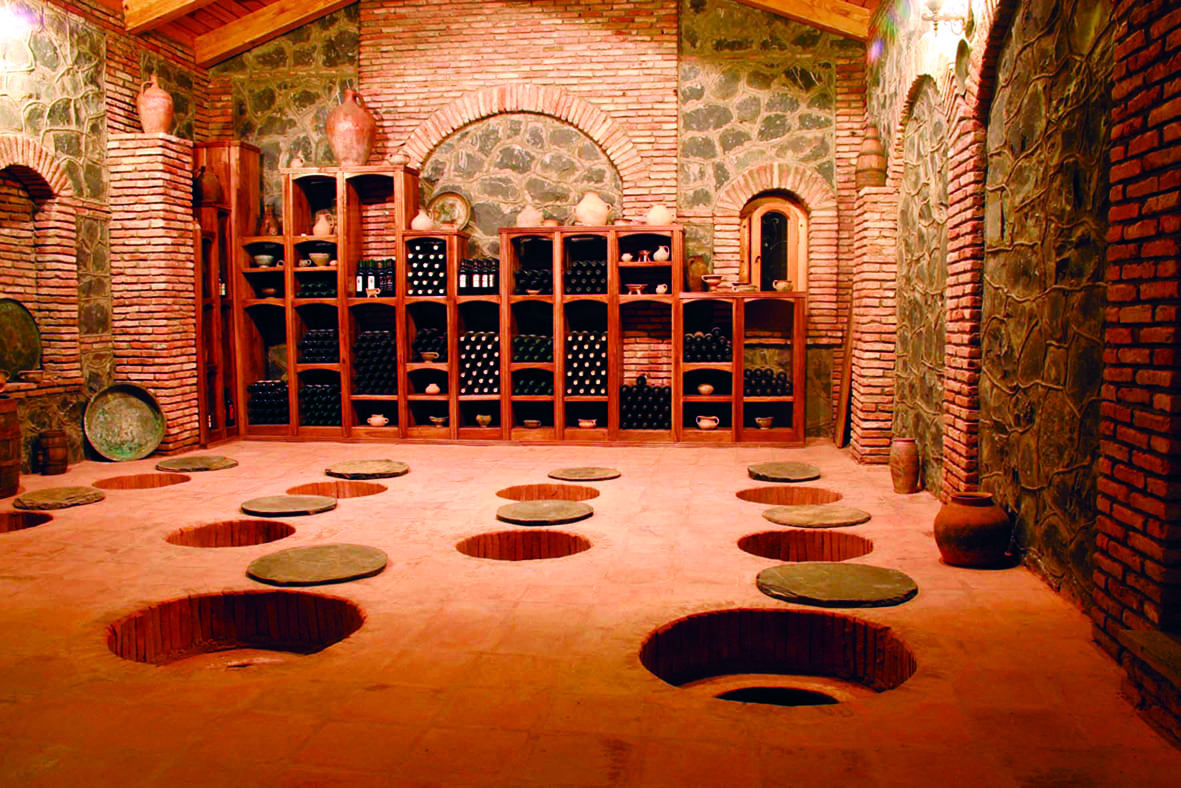
The history of Georgian wine, the oldest wine in the world
Traditional winemaking in Georgia and the future of Georgian wine
Georgian wine has recently been rediscovered as one of the best wines in the world, but not many know it’s also assumed to be the oldest. Before exploring the region ourselves, and getting to meet the Georgian winemakers, we did some research about wine and Georgia.
Check our full Georgian travel journal to learn more about this beautiful country.
The origins of the oldest wine in the world
Wine comes from the Latin “vinum”. The wine was produced for the first time, perhaps by chance, between 9 and 10,000 years ago in the area of the Caucasus. It appears that the first wine was produced entirely accidentally for the fermentation of grape forgotten in a container.
One of the oldest quotes about wineries in the Caucasus belongs to Apollonius of Rhodes (295 b.C.-215 b.C), the Argonauts found a fountain of wine in the palace of Aieti in Colchis and rested in the shade of grapevine. Colchis is the current western Georgia, the oldest place for wine production.
Even Homer in the Odyssey told of the fragrant and sparkling wines of Colchis.
David Magradze, an expert at the Institute of Horticulture, viticulture, and Enology in Tbilisi, told the magazine Observatory Balkans and Caucasus:
It is in this region that the oldest winery in the world was discovered, dating back to about 6,000 years ago.
“according to studies of archaeobotanists, the domestication of the grapevine began in the South Caucasus between the sixth and the fourth millennium BC, at the same time that would have started in Mesopotamia. It is in this era that the developing of Shulaveri-Shomu culture in the central part of the Transcaucasus region began, the oldest Neolithic culture to take place in the Caucasus. And from this period are some seeds of grapevine found in Georgia.“
Some Georgian grape varieties
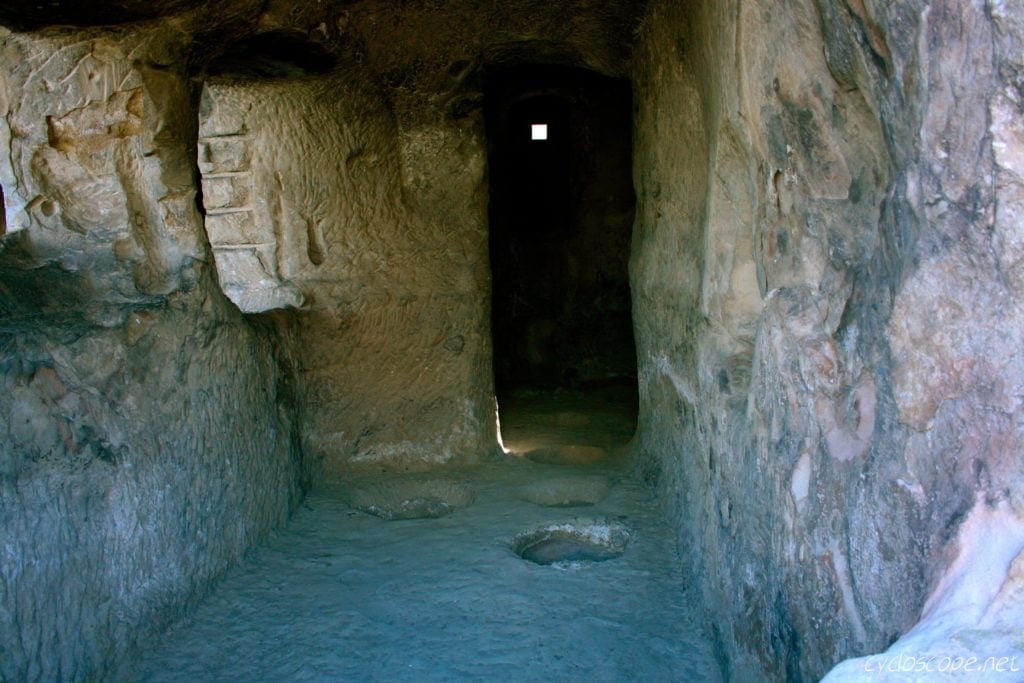
This small region contains dozens of native grape varieties whose history is lost in the mists of time.
From the varieties Saperavi, Vanis chkhaveri, otskhanuri sapere and dzelshavi yields excellent red wine, while white wine is made from grapes rkatsiteli, tsiska, tsolikouri, krakhuna, mtsvane kakhuri and mtsvane khikhvi.
Traditional winemaking techniques in Georgia: Kakhetian and Imeretian
The traditional methods of wine production are two: the Kakhetian and Imeretian, names that are derived from two Georgian regions. The difference between the methods used in Europe is not only the use of buried clay pots.
According to the Kakhetian method for making white wines, in clay pots, the vinasse is left in fermentation with the must. The difference from European wines is that these are only the must fermentation without the skins. The result of the Khaketian method is a yellow, dark, tannic wine with an alcohol content of 13-14 degrees.
In the Imeretian method, which consists of using only 5-10% of the stems, seeds, and grape skins, the wine is a bit more colorful, acidic, and with an alcohol content of 11-12 degrees.
Georgian wine in Qvevri
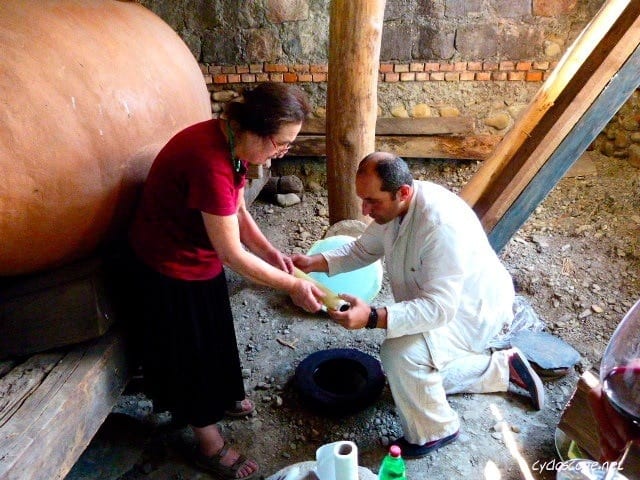
Qvevri (amphorae) are particular vases for winemaking. The stages of production and consumption have been developed over a thousand years. Many Georgian families have their particular traditions. Many have specific places behind their homes, where the qvevri are buried. The qvevri came in various sizes and were jars molded by hand by skilled potters.
“Even in ancient Egypt and Assyria, this type of amphora was used, with the difference that only half was placed underground. The fact that the jars are completely underground” says the Georgian winemaker “keeps the wine at a constant temperature of about 13-14 degrees.
So the winemaking is done without changes in temperature. Modern technology replaces this ‘natural’ method with steel tanks on which the temperature can be adjusted”.
The particularity of these vinification methods lies in the fact that the fermentation is made in the presence of stems and maceration can be up to six months. The Georgian wines produced according to traditional methods, therefore, are different in that they contain all the features of the place where they are produced.
According to tradition, after the birth of a child, a qvevri is filled with wine, which will then be opened only on the day of his/her wedding.
Marani, Georgian traditional wine cellars
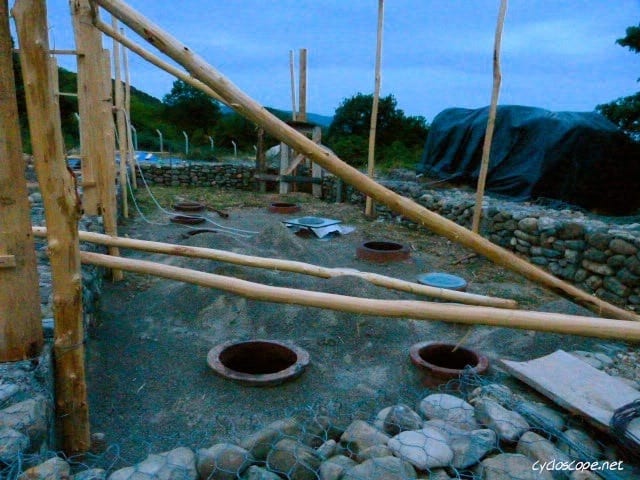
Each of the two different winemaking methods in use in Georgia has its own type of cellar (Marani in Georgian).
“In the region of Kakheti,” says Magradze, “the cellar is usually made of stone, and there are kept the qvevri. In the region of Imereti, however, the basement is made of wood, and large clay pots are placed underground, but outdoors and not in the cellar.
How an embargo can save a tradition: the Russian ban on Georgian products
But also in Georgia, the use of modern imported technology in winemaking is becoming more widespread. The traditional production, just like everywhere else, is at risk of extinction.
The major wine cooperatives, created in Soviet times, when Georgia was the wine tank of Russian republics, survived the collapse of the Union and chose modern technologies, preferring more productive varieties and conventional farming practices.
Moreover, the large clay jars are produced by local craftsmen following practices that date back to the dawn of winemaking, and their number is shrinking rapidly because young people are not willing to face the hard apprenticeship and accept an unsatisfactory return.
The Russian embargo on Georgian wine importation, introduced in 2006 has led to profound changes in the country’s wine market. The increased attention to the quality and the maintenance of traditional methods brought the first international recognition and the establishment of a Slow Food Presidium of the Georgian Wine in Jars.
Today Ukraine is the main importer of Georgian wine, followed by Kazakhstan and Belarus. Other countries that buy wine from Georgia are the United States, China, the Baltic countries, and Azerbaijan.
The Russian ban has resulted in both positive and negative changes for the Georgian wine market. As a result of the embargo, the producers had to necessarily increase the quality of wines in order to sell their products in other markets.
In the same opinion Renato Loss, a winemaker from Trentino, long-term resident of Georgia, according to whom: “once, any type of wine used to be produced. After the embargo, Georgians manufacturers are faced with the world market, they had to start thinking about the quality. “
But the embargo was also very bad for some wineries that have had to close due to bankruptcy.
Slow food presidium and the rebirth of Georgian traditional wines
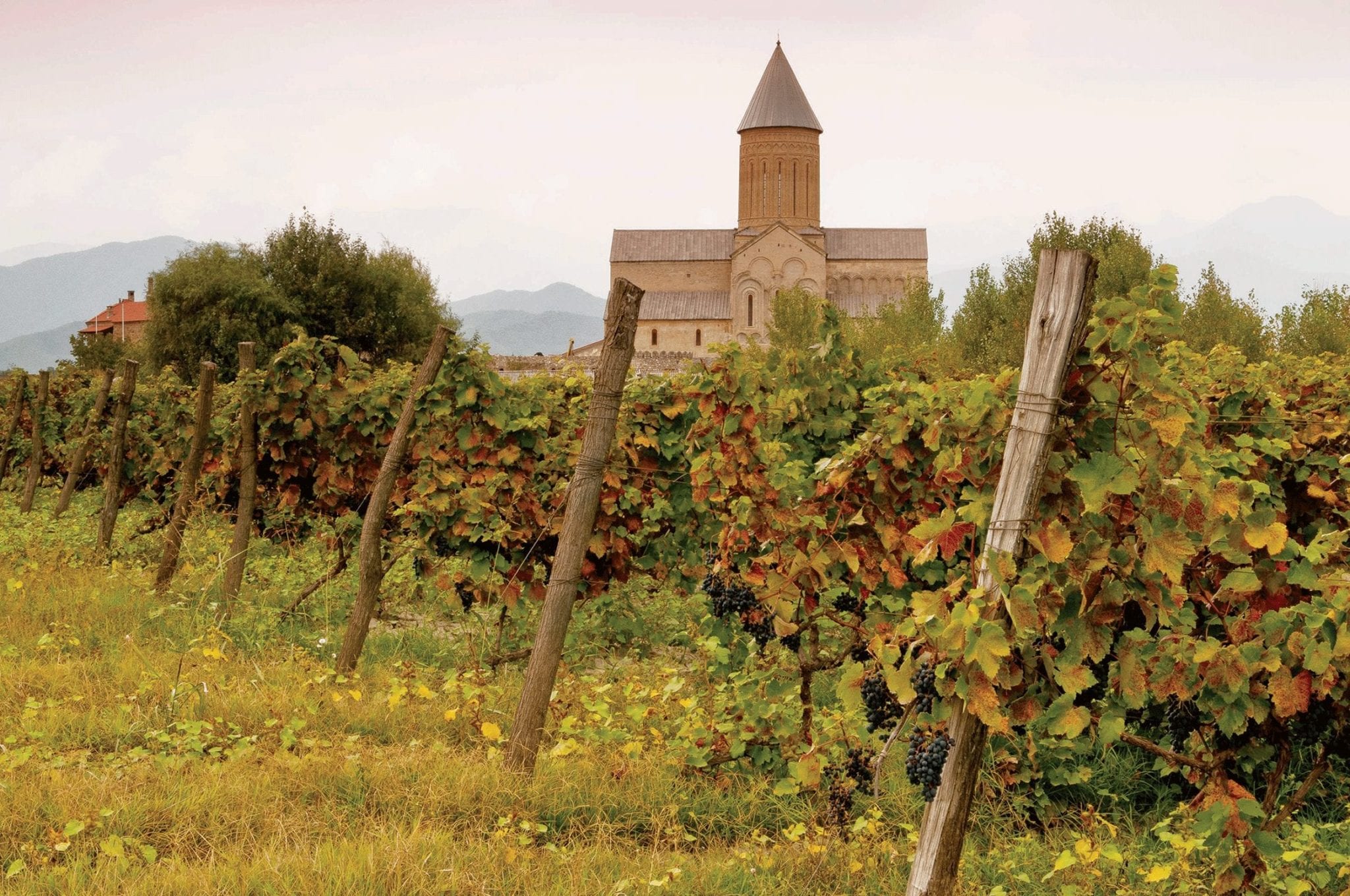
Slow Food, with its presidium, started in 2008, met with producers from different geographical areas. They identified two main ones. The first, Khakheti, is the most traditional and has the best facilities.
The second, Imereti, is located in the east and is completely different. Here the wine is produced mainly for family consumption and the facilities are limited: the jars are buried beneath outdoor canopies.
In 2011, the region of Kartli, bordering Kakheti and famous for its wines, joined the Presidium. In addition, manufacturers have joined the Qvevri Wine, association for the promotion and enhancement of Georgian Wine in Jars.
The presidium mission also aims to help producers make a marketable wine, providing them with basic winemaking and storage structures.
Through the advice of a local enologist and thanks to professional teaching, manufacturers have improved the quality of the wine and have learned to use sustainable techniques.
Today the presidium producers are expanding their businesses, recovering abandoned vineyards. In addition, to increase the sustainability of the project was started the production of chacha, a local distillate obtained from the skins of grapes of different varieties.
Is the embargo on Georgian wine lifted?
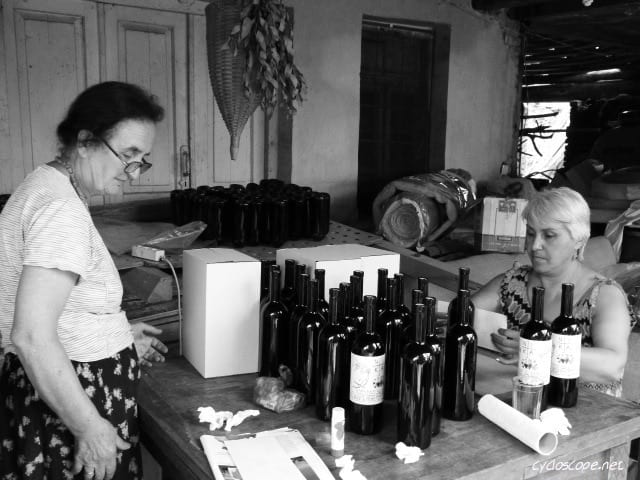
On February 4, 2013, in Moscow, took place a meeting between the head of Rospotrebnadzor (the Russian Agency for the Protection of Consumer Rights) Gennady Onishenko, and the Georgian delegation with respect to the restoration of supplies to the Russian market for Georgian wine and water.
The official reason adduced for the embargo on Georgian wine and mineral water in Russia was the low quality of production. Now, if the Georgian supervision is recognized as suitable for testing the quality of the supplies, the importation could start again.
However, as noted by the President of the Rospotrebnadzor Onishenko, Russia will maintain the embargo on the supply of wine material (must, half-ready wine), thus placing Georgia, according to experts, at a disadvantage compared to Western Europe and Latin American countries exporting wine materials to Russia, thus greatly reducing the cost of production.
Before the introduction of the embargo, Georgian wines accounted for about 10 percent of the Russian market. During the period when the ban was in force, their place was occupied by South American wines, and it won’t be easy for Georgian wines to regain the old position.
Where to buy Georgian organic wine
If you wish to try some Georgian organic wine (sulfite-free) check
Ghvino
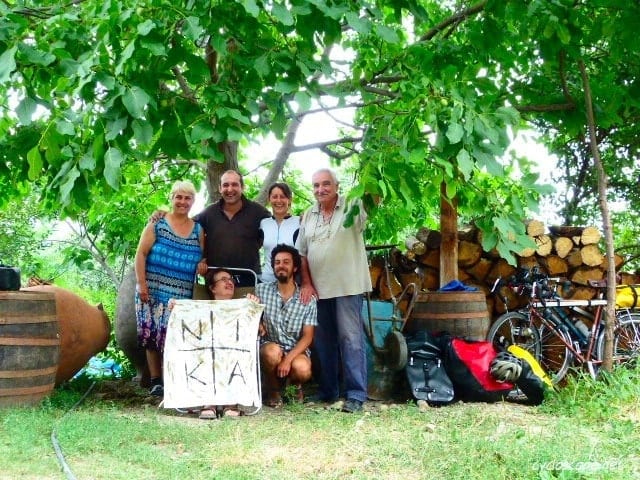
Follow our explorations of the world


